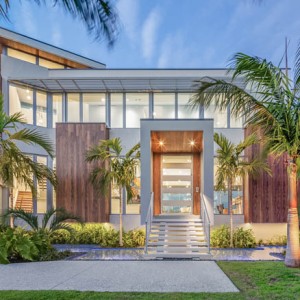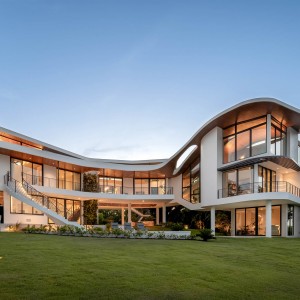Tracking trends in sustainable home building has been a decades-long passion of Michael Halflants, FAIA—a principal with the Tampa/Sarasota firm, Halflants + Pichette. This past September, he shared his insights at the Interior Design Society (IDS) Environmental Design Conference: Green Building, Healthy Lives! on the New College of Florida campus. The event brought together local and national green building experts, and inspired participants to build better structures and achieve more eco-conscious lifestyles. Halflants served on a panel called “Design for Sustainability and Environment,” sponsored by the American Society of Interior Designers (ASID), and focused on the topic of “Sustainable Density.” He joined two other speakers: landscape architect David Young, who discussed “Environmental Landscape Design”; and interior designer Sarit Marcus, who talked about “How to Create an Eco-friendly, Healthy Home.” Halflants sat down with us for a Q&A after the conference.

SRQ: How long have you been interested in sustainable architecture/design, and what makes you so passionate about it? MICHAEL HALFLANTS: I’ve been teaching a course on tropical architecture at the University of South Florida for about 20 years. I started teaching and learning about this topic to figure out how to best build in accordance with the wonderful environment that we typically have here in Florida. But one thing that has been of interest to me more lately is designing housing projects (like condos and apartments) as opposed to designing single-family houses; it is far more sustainable. A single-family house (even with solar panels and all of the best technologies available) in the end can’t compete with a condo that is downtown and within walking distance of all of the services. When you’re building condos, you end up spending a lot fewer resources than you would on a single-family house, both during construction and during the life of the project. A lot of my discussion at the Green Building conference was about that, and it was timely because the city was just deciding whether to raise the density limits for Sarasota, which I was in favor of. Many of the building issues we have in the states and worldwide could be improved if we went away from the model of single-family lots.

What are some ways that Sarasota is moving in the direction of sustainable building? HALFLANTS: In Sarasota County, 76 percent of households consist of one or two people, yet most of what’s on the market is living spaces with three bedrooms or more. When the Sarasota Chamber of Commerce surveyed young professionals, almost 80 percent of them stated that they wanted to live in an apartment and 62 percent of them said they were hoping to find a one- or two-bedroom apartment. If a municipality restricts the number of residential units per acre to an unreasonably low number, as the city of Sarasota does, it encourages the construction of large condominiums to the exclusion of all others. It’s neither sustainable nor equitable to build an entire city of luxury units. The average unit size should be in the range of 1,200 square feet rather than 4,000. A smaller footprint will use less resources to build and bring more residents in close proximity to restaurants and work. Higher density generates less traffic and a smaller carbon footprint per resident. Many municipalities around the country are subjected to a zoning code that makes it difficult to create smaller units, even though they are more sustainable to build and more inviting to a diverse population in terms of income, age and background. These codes can be described as exclusionary zoning where one is excluding potential buyers who can’t afford an enormous unit. It’s not really possible to create affordable units unless we allow for higher density.

What were some of the highlights of your “Sustainable Density” talk, and what did you enjoy about participating in the conference? HALFLANTS: I enjoyed talking about how, in the U.S., land development is growing twice as fast as population growth. In terms of the global population, we’re already spending resources faster than can be sustained, and it’s something that needs to be addressed. I very much like the idea that there are events like the Green Building conference that bring people together to discuss these topics. I was on a panel with a landscape architect who talked about how you can do more with sustainable yards in terms of water harvesting, and also someone who talked about the best sustainable materials to use for construction. I talked about green building in a different light, in terms of how we live and how that has an impact on where we live, but these are all really important points that come together to address the same goal.










